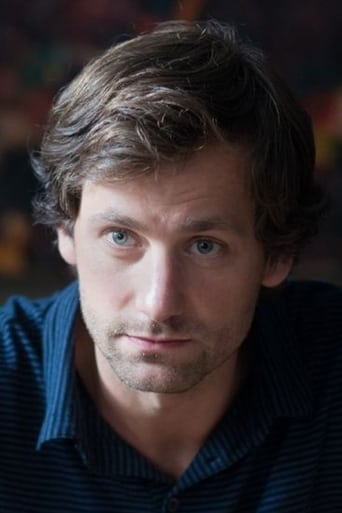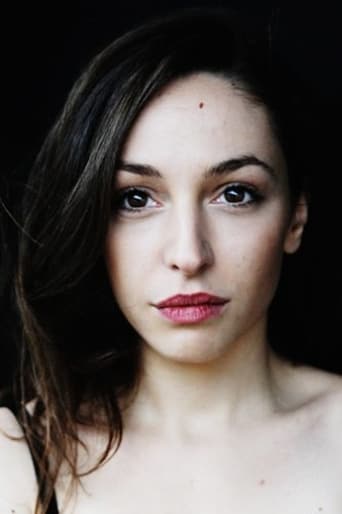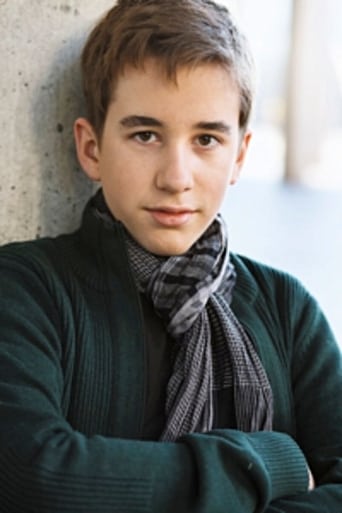Mike Beranek
Of the over 300 films I watch a year this stands out as superlative -
meticulously crafted and thought-provoking. The way it uses only its modest static camera and small ensemble to address very big issues: theology, sin, spirituality and abuse, anorexia, consent to treatment , you name it it's packed in here. For me most moving are the searing religious resonances and of course the Christian theme from its contemporary perspective. This ranks with the superb Krzysztof Kieslowski's Dekalog series in gut-wrenching poignancy. And it's not quite so simple as being about spiritual abuse and other forms of bullying, nor Is it merely about just cranky religious cults, and it's not a simple rejection of the existence of God. But it is in a way all that too at the same time. There's an uneasy agnostic ambiguity behind the deliciously dark humour. It is funny at times, but horrified half-laughs only came for me, until the film ends with a quirky almost facile gesture. The minimalism means the occasional camera moves are breathtaking to encounter, as is movement of the actors. The film manages to deliver a serious philosophical punch with a feather pillow, the blow leaving much to take home to nurse in thought and perhaps prayerful thought.The young girl is spellbinding as with her character's mother. So much is a left implicit in the acting - the strident priest in the beginning becomes a lot more difficult to read in one of the dramatic end sequences. As mentioned it doesn't shout as it shocks - the characters speak volumes by simple steps to the back of shot, or slipping in and out of frame.. In a tightly wound intense way it is like a play, but the filmic realism is still there and essential, comprising one of a host of elements that makes this such a nicely formed and profoundly moving work of art.
Errington_92
A story of extreme religious conviction, Stations of the Cross left me in a profound state of sorrow for a character who never realised the insanity of their actions.Maria is raised in a devout Catholic family, with a domineering mother instilling guilt over any slight indication of sin (of which there are no bounds) and her local priest continuing to give Maria a sense of moral failure, that she must thrive for God's love no matter how horrific the consequences.The narrative's dogmatic nature is intensified by Anna Bruggemann's script, whose use of characterisation creates thoroughly vivid individuals whose actions serve to enforce (depending on your ideals) our own sense of morality. The static cinematography is another effective tool in reflecting the characters' dogma. It lets audiences become further embedded into Maria's tormented existence, feeling dismayed with each dire choice she makes.As the final scene played out I couldn't help but think Maria's life was wasted, missing out on a life's worth of wonder in exchange for a belief that enforced repression. Station of the Cross is an powerful study of religion's morbid nature.
J M IRISH
The construction of this film perfectly demonstrated the integration of form and content with its division into chapters reflecting the stations of the cross.The use of single shot sequences attempted to complete this structure with a fly on the wall technique reflecting the realist script/acting style. A recording of the effects on a young girl of religious extremism. Where I found a shortfall in the film was in the use of such extreme belief in modern Europe.No doubt there are many such believers,whether Christian,Muslim,Jewish or any other religion. But it is in the ordinary, everyday influence of the church that ,it seems to me, most influence is seen and bypassed in drama because it is not so viable for dramatic usage in film/television. For example, the values taught in schools and reinforced in mainstream media as norms for being a "good" or "successful" member of society can have severe effects on young people,and throughout life. For mainstream writers/media the ordinary is a no go area.And yet it is here that millions and millions of people live in a world inhabited by, and constructed out of , religious belief. My criticism of this film,then, is that it suffered the fate of the story teller..be it soap opera on the Telly or film for the pictures....."make it dramatic...go for the extreme...the real world is too mundane".
JvH48
I saw this film at the Berlinale 2014, as part of the official Competition. When reading the synopsis on the festival website, I was afraid at first that the chosen format of 14 scenes with a still camera, numbered and named as per the 14 Stations of the Cross, would effectively work out as a sort of harness. We've seen that many times before, when the format takes over and the contents suffers. Very soon, however, I was put at ease with the opening scene "1. Jesus condemned to death". I could not do anything further than eagerly await the rest of this wonderful film.This initial 10-minute scene foreshadows everything that is to follow. I can say that now in hindsight, since the full extent of whereto this drama is heading, will be gradually handed over in bits and pieces in later parts. The central character is 14 years old Maria, but her hard-lined mother is also a key figure in the drama as it enfolds in 14 distinct scenes. The role of the father figure is next to negligible (even the french au-pair had more lines than he had).Aforementioned first scene shows a priest with a group of 7 boys and girls, sitting around a table, talking about the essentials of what their further life will entail being a true Catholic. They are together in preparation for the sacrament of Confirmation, from which moment on they are expected to stand up for their faith, and to defend it against everything that deviates from the Ten Commandments and the Seven Sacraments, and to further uphold everything else advocated by the Catholic church before Vaticanum II (1962 to 1965). A very clear explanation is given about day-to-day practices, essentially resisting all temptations that are laid on your path by Satan. Another topic is bringing small sacrifices, like not eating a cookie, even when tempted while it seems so harmless. Other forbidden fruits are pop, jazz, soul and other such "modern" (not my words) music styles, allegedly all based on rhythms invented by Satan.Main character Maria belongs to a Catholic family of hardliners, members of the Congregation of St Pius XII, practicing the very traditionalistic teachings of this congregation. Aforementioned opening scene makes perfectly clear that Maria is very prepared to take her faith seriously, including the small sacrifices that may bring her nearer to a good place in heaven. In the second chapter, where the family is walking through a park, she considers her coat and sweater as a luxury and takes them off in spite of the cold weather. She also refuses to smile when family pictures are taken. More such things happen, but she does not explain herself. She succeeds in annoying their mother, and thus unwillingly destroys the happy family atmosphere. We see this mother later on as having a firm hand in the religious upbringing of the children, while the father lets it all pass without interfering.Apparently a side role but his importance becomes evident later on, is Maria's little brother who has not spoken a word since his birth. We get some hints that illnesses and handicaps can be "given" to us as a retribution for our sins, or to challenge the strength of our faith. Gradually Maria gets obsessed with the notion that she can trade her life for the benefit of her brother. She ignores everyone saying such a calling lies in the hand of God, and no one can decide that for himself.Each and every scene that follows further portrays the mutual relations within the family, as well as how Maria interacts with others like school mates. The gym class scene may serve as a perfect example. Maria retracts while there is music played she deems belonging to one of the "Satan invented" categories. That is what she tells to the teacher to explain why she does not participate. One of her class mates makes a joke out of it when he subsequently refuses to run in circles while "forbidden by my religion". Others are more constructive by bringing up the notion of tolerance against other beliefs, indeed a good point to make in such circumstances. Exactly like the opening scene, this gym class scene serves as solid proof that a still camera need not be an obstacle for a vivid scene.Not all chapters, however, go neatly along with their respective titles as literally derived from the 14 Stations of the Cross. A few times we feel an inherent shortcoming of the chosen format, being a very good find as a basic idea but the concept shows a few spurious cracks. Nevertheless, it did not hinder me too much, not feeling as a harness when considering the final product overall.Strong performances by Maria as well as her hard-lined mother make this film into an indictment against any too fundamentalistic belief, whether it regards Islam, a protestant denomination, or Catholicism. Tolerance is the key word here, as rightly brought up by one of Maria's class mates. It cannot be that a strict interpretation of religious laws, or the rules imposed by whatever church, are extended to others being no members of that faith. Believers must allow room for other opinions. Strict adherence laid upon outsiders is always a bad thing, regardless of the good intentions of these religious laws. It can lead to extreme actions, demonstrated by Maria in later chapters of this wonderful film. If anything, it offers food for thought (but no solution) how to deal with people who go to any length to impose their beliefs on others. They probably do that with the best of intentions, but the side effects are worrisome. Some people may find that this film has turned religion into a caricature, uncalled for, but I don't think so, especially when reading the newspapers where we read about religious extremism all over the world.




